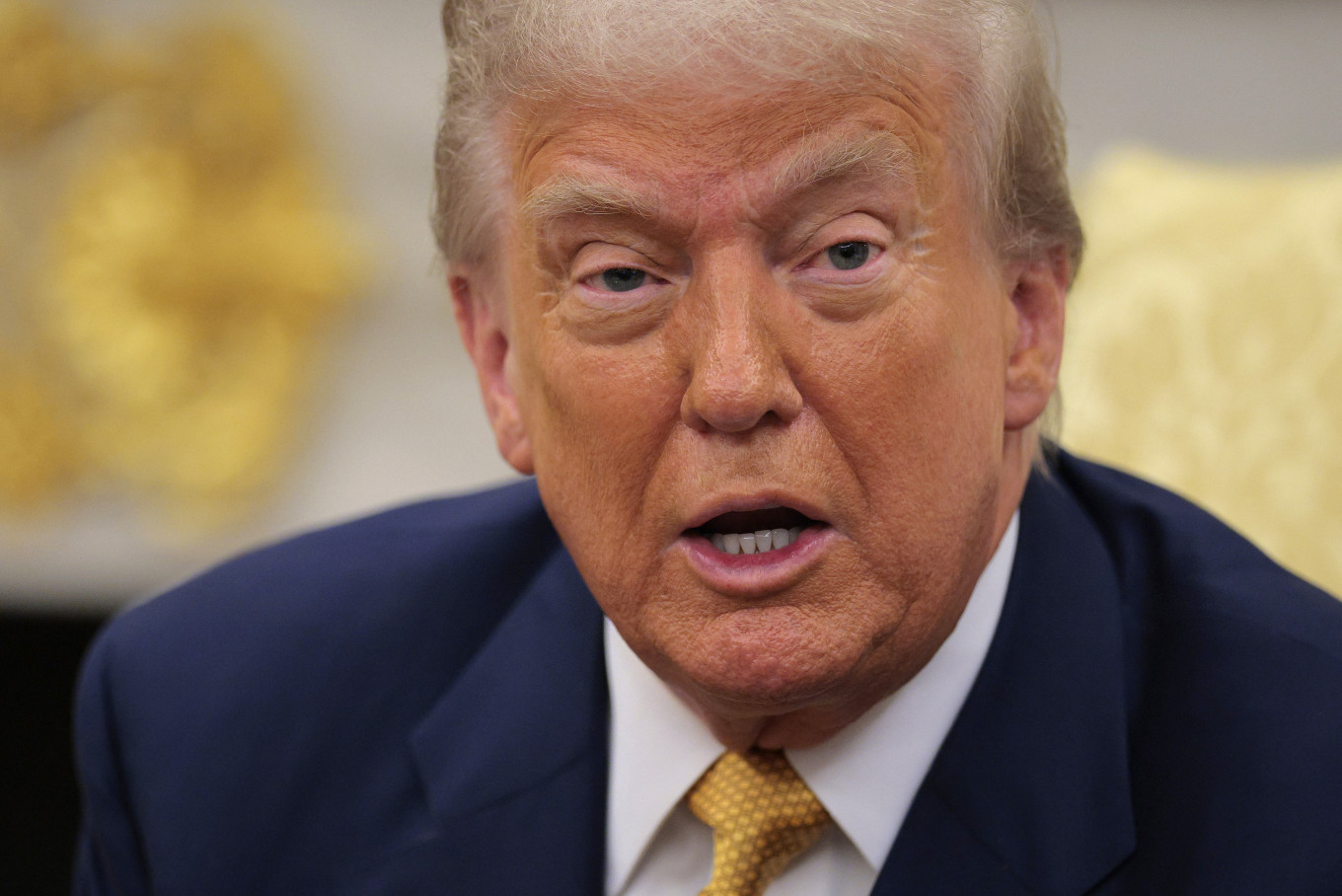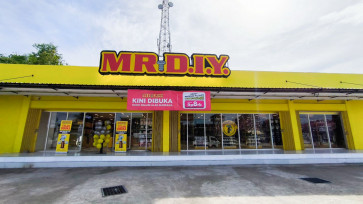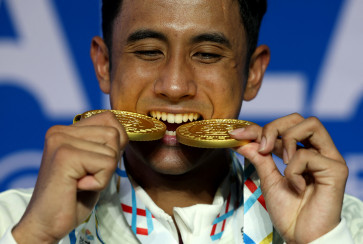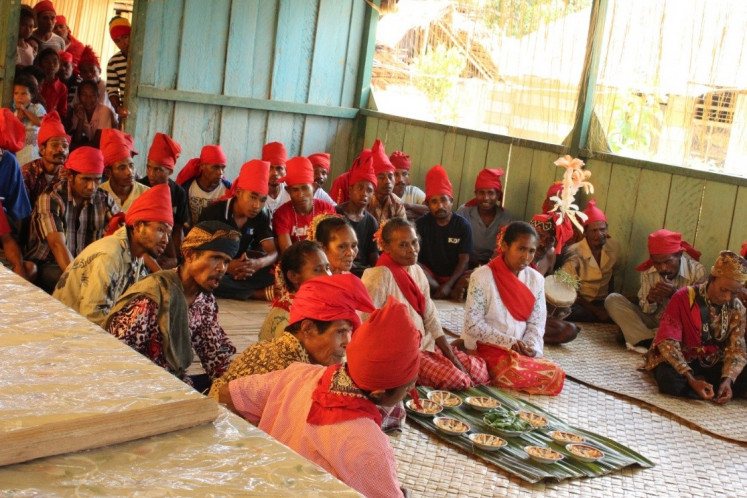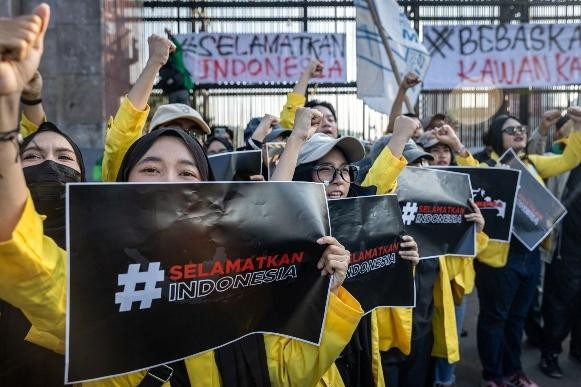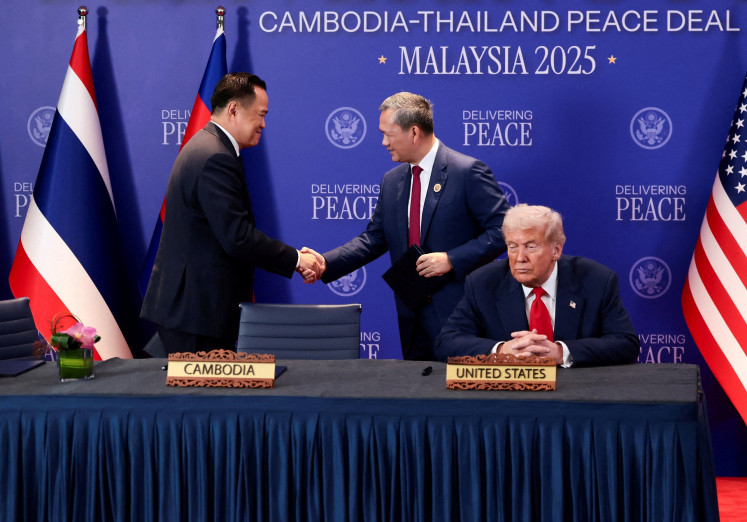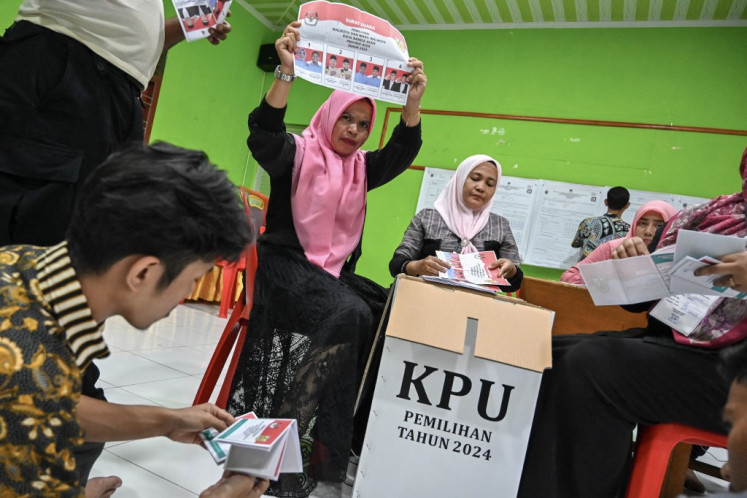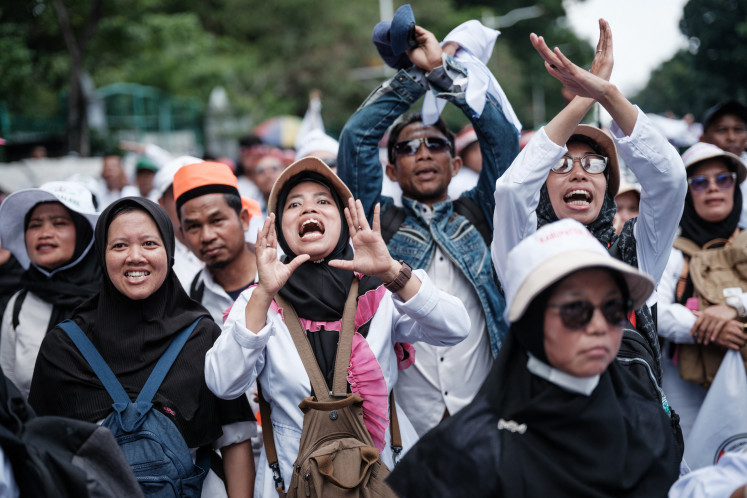Popular Reads
Top Results
Can't find what you're looking for?
View all search resultsPopular Reads
Top Results
Can't find what you're looking for?
View all search resultsThe age of unfair trade
After all, given that exorbitant new US import tariffs formed the basis for negotiations, the best-case scenario was to maintain the status quo of normal trade.
Change text size
Gift Premium Articles
to Anyone
W
hile the details of a trade agreement with the United States have yet to be settled, it is clear by now that the bilateral deal is no cause for celebration on our side.
And it was never expected to be, because the odds were stacked against Indonesia, and other countries, from the outset.
After all, given that exorbitant new US import tariffs formed the basis for negotiations, the best-case scenario was to maintain the status quo of normal trade.
The worst case was to be subjected to the full extent of what Washington termed “reciprocal” tariffs, while the likely outcome would land somewhere in between.
That means a change in the terms of trade favoring Washington at the expense of trade partners was practically built into the negotiation framework before talks with anyone even began.
In our case, the government settled for a deal, essentially a handshake for now, that saddles our US-bound exports with a 19 percent tariff, which is better than the 32 percent threatened by Washington in April, but still makes our goods 19 percent more expensive, and hence less competitive, in the US market.
At the same time, we have committed to dropping entirely tariff and nontariff barriers (NTBs) for US-made goods shipped to Indonesia.
Is that fair? Totally not. Can we blame our government for a bad deal? That is a hard question, because we do not know how much room for compromise existed.
A 32 percent tariff would have effectively shut access to the world’s largest consumer market for many Indonesian exporters come Aug. 1, so our negotiators led by Coordinating Economy Minister Airlangga Hartarto were under immense pressure to avert that, even if the alternative was far from appealing.
From our perspective, the negotiations were about damage control rather than achieving a win-win, which was never on the table. We had nothing to gain; it was only about how much we would lose.
Aside from yielding on tariffs and NTBs, we also vowed to spend big on Boeing aircraft, US agricultural produce and crude oil, refined fuel and liquefied petroleum gas (LPG).
One could argue that we got a marginally better deal than Vietnam, which faces a 20 percent baseline US import tariff, and on par with that of the Philippines at 19 percent. Both of those countries also granted a host of concessions to the US, many similar to ours.
Put bluntly, the way the US dealt with trade partners can be likened to a robber demanding a person hand over their wallet but then settling for just half of the cash, as long as the victim grant the robber some additional favors, and take it all on the chin with a smile.
Big stick diplomacy is nothing new, and the large US market gives Washington lots of leverage, especially if other countries negotiate tariff deals one by one.
Had we presented a united ASEAN front, or even approached Washington in the ASEAN+3 format including Japan, South Korea and China, who knows how those talks may have ended?
As an aside in view of current events, the very last thing ASEAN needs right now is a military conflict between two of its members, which puts our lack of unity on full display for the world to see and draw conclusions from.
The Trump administration is pursuing a clear-eyed long-term strategy to revive US manufacturing, not acting on irrational, populist impulse, as some observers suggested earlier this year.
Our response must be equally clear-eyed and include a deliberate push into new export markets, especially fast-growing emerging economies that share our interest in nonpoliticized trade on equal footing for mutual benefit.
The US is forcing its goods onto the global market at the expense of other exporters of those products. For us, to import more oil, soybean or planes from the US means importing less from alternative suppliers.
Welcome to the age of unfair trade.

